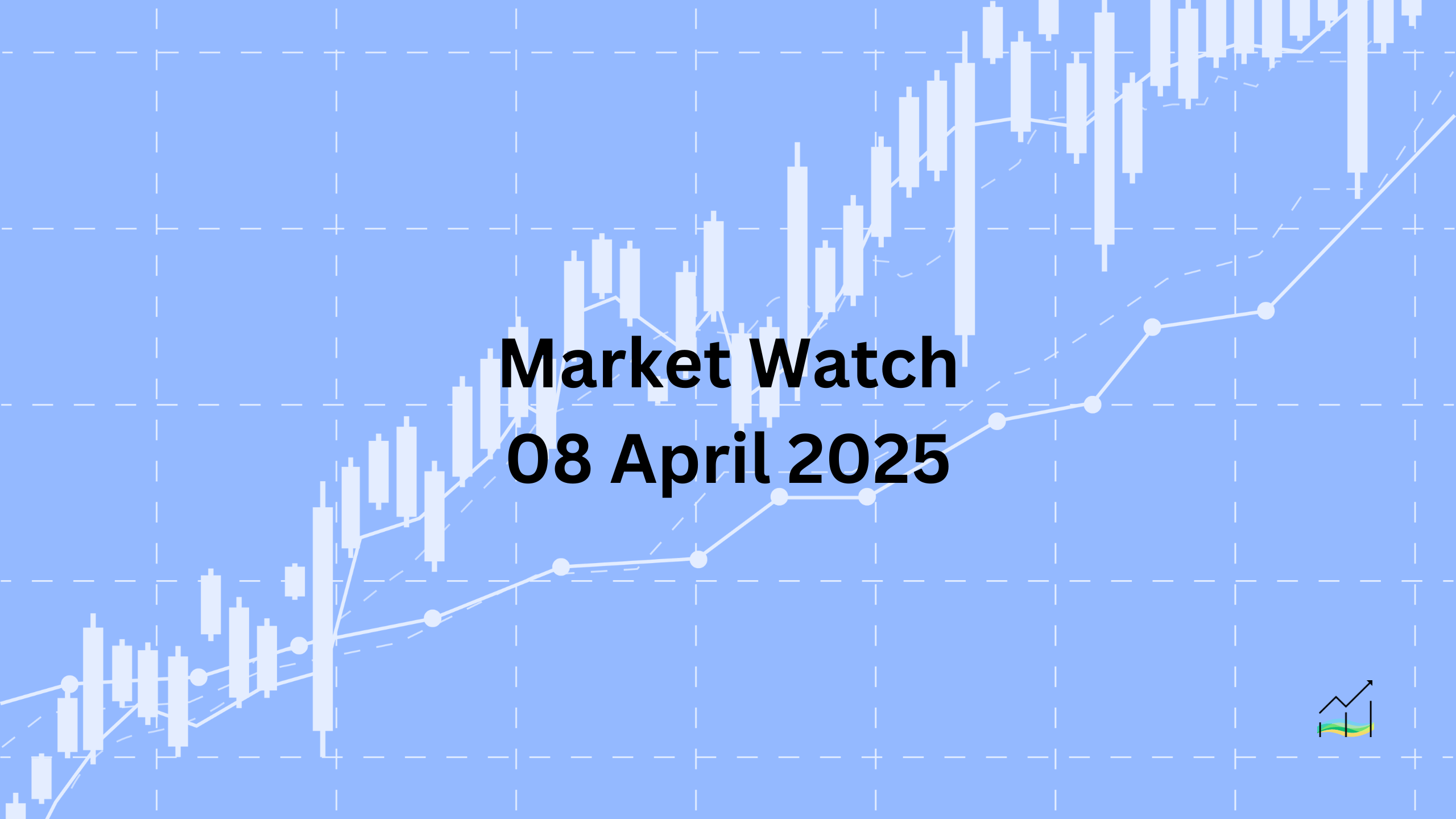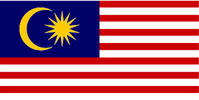08/04/2025 Market Watch

Tariff Tensions Cool, But Uncertainty Lingers
Key Takeaways:
- Market volatility eases as tariff tensions are temporarily absorbed.
- US trade moves increasingly viewed as negotiation tactics, not policy shifts.
- Japan responds to US claims, climbs up the priority list in trade talks.
- US dollar softens; AUD and NZD lead G10 recovery.
- PBOC sets yuan fix above 7.20, fueling weaker yuan expectations.
- Strong equity rebound across Asia-Pacific; Europe and US futures firm.
- Gold reclaims ground above $3000; oil partially recovers.
- Market participants remain alert to political and geopolitical risks.
Financial markets are stabilising after last week’s heavy turbulence driven by escalating tariff actions between the US and China. While nerves remain, the sharp reaction has eased as participants begin interpreting the aggressive US stance as a strategic play in ongoing negotiations. Japan’s pushback against US claims and its advancement in trade discussions reinforce this view. Although this has calmed immediate concerns, confidence is fragile and could easily be disrupted by a sudden political comment or shift.
Currency markets show the US dollar under mild pressure, with the Australian and New Zealand dollars bouncing back strongly after recent declines. The People's Bank of China set the yuan fix above CNY7.20 for the first time since 2023, suggesting that a weaker yuan may be part of Beijing’s response to tariffs.
Equities across the Asia-Pacific surged, led by Japan’s Topix index climbing over 6%, while European stocks and US futures posted moderate gains following a steep decline last week. Bond yields in Japan, Australia, and New Zealand jumped significantly as risk appetite returned, while US yields are slightly lower near 4.17%.
Commodities are also showing signs of recovery. Gold, after dipping below $2960, has rebounded and now holds above the $3000 mark. Oil prices have also recovered from recent lows but remain volatile. Geopolitical developments remain a wildcard, especially with US-Iran negotiations set to begin and increased military activity in the region.
United States of America
Overview
The dollar regained some footing in a volatile session, reflecting cautious optimism around ongoing US-Japan trade talks. Market attention has shifted away from minor economic releases toward tariff developments and broader equity market movements. While high-frequency data is on the calendar, it's unlikely to shift sentiment meaningfully. Focus remains on inflation data later in the week and the evolving expectations around monetary policy easing.
Economic Drivers
- Market believes US tariffs may be more about negotiation than permanent protectionism.
- Potential alternative measures, such as export tax credits, may reduce the need for tariff escalation.
- Equity market stress is influencing rate cut expectations, even as the Fed remains cautious.
- Fed Chair Powell’s recent remarks signal that policy easing remains unlikely in the near term.
Data and Events
- April 9 – NFIB Small Business Optimism Index.
- April 10 – MBA Mortgage Applications, Wholesale Inventories, FOMC Meeting Minutes.
- April 11 – Consumer Price Index (CPI), the key data point of the week.
Price Action
- Dollar Index rose to ~103.50, approaching the 61.8% retracement of its recent decline.
- Currently trades with a softer tone but still within yesterday’s range.
- Futures pricing for a May rate cut eased to 33%; chances of a 50 bp cut in June fell below 20%.
- Equity sell-off showed lingering market hopes for Fed policy support despite firm central bank guidance.
Key Points:
- Dollar finds support near key technical levels but lacks strong momentum.
- US-Japan trade talks reinforce view of tariffs as negotiating tools.
- CPI report on Thursday is the most critical scheduled release.
- Market expectations for near-term rate cuts have moderated but remain sensitive to equity performance.
Australia & New Zealand
Overview
Confidence has yet to fully return to the Antipodean currencies following last week’s abrupt sell-off. Both the Australian and New Zealand dollars suffered sharp declines of over 5% during a mini flash crash, underscoring fragile sentiment. While both currencies are rebounding and leading G10 gains today, uncertainty persists. The focus now turns to the Reserve Bank of New Zealand’s policy decision, with markets cautiously watching for further rate adjustments.
Economic Drivers
- Market sentiment remains shaky after the rapid plunge in AUD and NZD last week.
- Recovery today suggests technical support and short-term bargain hunting.
- Expectations remain that RBNZ may continue easing, contributing to Kiwi weakness.
- Diverging monetary policy paths in the region continue to shape price action.
Data and Events
- April 10 – Reserve Bank of New Zealand Interest Rate Decision (expected: 25 bp cut to 3.50%).
- A 50 bp cut is not completely ruled out, but only a small probability is priced in.
Price Action
- AUD dropped ~0.85% yesterday but is rebounding today near $0.6075.
- Pre-flash crash levels remain in focus; February's low was just under $0.6090.
- NZD fell over 1% yesterday, touched a new yearly low (~$0.5510), and has rebounded to ~$0.5625.
- Kiwi still trades near multi-year lows, with "Covid low" around $0.5470 as a key support.
- Swaps market sees New Zealand’s policy rate ending the year closer to 2.75%.
Key Points:
- Both AUD and NZD are recovering but remain vulnerable after last week’s flash crash.
- RBNZ policy decision is the key event; a 25 bp cut is widely expected.
- Technical levels suggest more recovery potential, but conviction is still low.
- Market pricing implies further easing ahead, especially in New Zealand.
Canada
Overview
The Canadian dollar remains under pressure as the greenback continues to test key technical levels. Although the loonie saw a slight reprieve, market sentiment is leaning toward further weakness amid rising fears that US trade actions could tip Canada into recession. Recent domestic data, including a soft labour report and a cautious business outlook, has strengthened the case for a potential rate cut at next week’s Bank of Canada meeting.
Economic Drivers
- Rising concerns that the US trade war could trigger a Canadian recession.
- Weak employment data and a downbeat business survey support expectations for policy easing.
- Rate cut odds have nearly doubled since late March, reflecting deteriorating sentiment.
- Market sensitivity remains high to soft economic data, especially following US tariff developments.
Data and Events
- April 9 – IVEY PMI Survey (markets may react more to weakness than strength).
- April 17 – Bank of Canada Interest Rate Decision (not this week, but driving expectations).
Price Action
- USD/CAD approached CAD1.4300 yesterday, stalling just under the 20-day moving average (~1.4310).
- Today's range is confined between CAD1.4150–CAD1.4250, with the pair trading near the midpoint.
- Last Thursday’s broad range (~CAD1.4320 high) remains the key technical zone.
- Market pricing now reflects just under a 60% chance of a rate cut next week, up from 30% two weeks ago.
Key Points:
- Canadian dollar under pressure, with USD/CAD testing resistance near key moving averages.
- Dovish expectations grow amid weak economic data and external trade risks.
- IVEY PMI expected to carry more weight if it surprises to the downside.
- Rate cut odds are climbing sharply ahead of next week’s BoC meeting.
China
Overview
The Chinese yuan continued to weaken against the US dollar, with the offshore rate pushing toward multi-month highs as the PBOC allowed more flexibility in the currency's daily fix. This move, paired with intensifying trade tensions and fresh tariff threats from the US, has added pressure on the yuan. While the official rhetoric remains firm, China may also be using the current environment to push forward strategic initiatives—such as expanding the digital yuan’s cross-border role. At the same time, domestic disinflationary pressures persist, and trade-related price effects may offer limited temporary relief.
Economic Drivers
- The PBOC is tolerating more volatility in the yuan, signaling a shift in currency management tactics.
- Renewed tariff threats from the US heighten downside risks for trade and sentiment.
- China's weak consumer price environment reflects underlying disinflationary or deflationary forces.
- Tariffs could ironically offset some of this pressure by raising prices on certain imports.
- China is advancing its digital yuan infrastructure, especially with ASEAN and Middle Eastern nations.
Data and Events
Light week; no major scheduled data.
Price Action
- USD/CNH climbed to CNH7.3650, driven by PBOC’s highest fix in over six months (CNY7.2038).
- Offshore yuan under pressure, as the dollar held firm near CNH7.35 at session close.
- The PBOC’s broader daily adjustments now reflect a willingness to absorb more two-way movement.
- Digital yuan initiatives gaining traction as potential alternatives to SWIFT-based settlements.
Key Points:
- Yuan weakens further amid trade tension and a more flexible PBOC fix strategy.
- US tariff threats contribute to downside pressure but may also stoke inflationary impact in China.
- Digital yuan expansion highlights long-term strategic positioning but doesn’t threaten USD dominance yet.
- Disinflation concerns remain central to China’s macro landscape.
Europe
Overview
The euro continues to trade with a heavy tone as weak economic data and growing expectations for a rate cut weigh on sentiment. After a sharp move lower, the single currency is now consolidating above $1.09. Germany’s industrial production slump and the sharp sell-off in European equities have added to concerns that the region is increasingly vulnerable to external shocks, particularly from escalating US tariffs. Market pricing suggests strong conviction that the European Central Bank will deliver another rate cut at next week’s meeting.
Economic Drivers
- Germany’s February industrial production fell 1%, adding to evidence of a sluggish economy.
- The Stoxx 600 index has dropped nearly 18% in just over a month, amplifying risk aversion.
- US trade tensions further dampen Eurozone sentiment.
- Markets are firmly expecting another ECB rate cut (~85% probability priced in).
- Yield spreads reflect recent volatility, with the US-Germany two-year premium jumping sharply before easing today.
Data and Events
Light week ahead; focus remains on ECB expectations and broader market tone.
Price Action
- EUR/USD dipped to just below $1.0880, testing the 61.8% retracement level (~$1.0890).
- Currently consolidating between $1.09 and $1.0990; 20-day moving average near $1.0865 remains in play.
- US-Germany two-year yield spread surged above 200 bp—highest since February—before easing to around 190 bp in calmer trade today.
- Persistent pressure on euro reflects both rate expectations and risk-off sentiment.
Key Points:
- Euro remains vulnerable after breaking key technical support levels.
- Germany’s weak data and equity losses fuel expectations for ECB action.
- Yield spreads widen on US strength but are showing some correction today.
- Market focus is firmly on the ECB meeting next week with a cut nearly fully priced in.
Japan
Overview
The yen weakened as the US dollar rebounded alongside a sharp rise in US Treasury yields. A stabilisation in global equity markets removed downward pressure on yields, allowing the dollar to recover significantly from last week’s lows. Meanwhile, Japan’s external balances improved in line with well-established seasonal trends, with a strong swing back into trade and current account surplus in February—possibly boosted by accelerated exports ahead of US tariff enforcement.
Economic Drivers
- USD/JPY strength closely tied to recovery in US 10-year yields, rising from ~3.87% to 4.22%.
- Seasonal improvement in trade and current account balances provided short-term support.
- Japan posted its largest trade surplus (balance-of-payments basis) since March 2021.
- The current account turned sharply positive in February, consistent with historical norms.
- Surplus may have been aided by front-loaded shipments in anticipation of US tariffs.
Data and Events
Light week; no major releases expected.
Price Action
- USD/JPY rallied from ~144.80 to ~148.15, recovering more than half of the drop from the March 28 high (~151.20).
- Currently consolidating between JPY147 and JPY148; further upside possible if US yields continue rising.
- February trade balance: +JPY713 billion (vs. -JPY2.94 trillion in January).
- February current account: +JPY4.06 trillion (vs. -JPY260 billion deficit in January).
Key Points:
- Yen weakened on yield-driven dollar strength and easing risk aversion.
- US 10-year yield rebound remains the key driver of USD/JPY upside.
- Japan’s external accounts improved sharply, but seasonal and tariff-related factors may have amplified the swing.
- Technical outlook remains bullish for USD/JPY if yields extend gains.
United Kingdom
Overview
Sterling remains under pressure after back-to-back sharp losses, marking a near 3% decline in just a few sessions. It fell to a one-month low and is now consolidating near the bottom of its recent range. With no significant UK data due until the February GDP report later this week, the market focus has turned squarely to monetary policy expectations. The pricing for Bank of England rate cuts has accelerated, with traders now fully expecting a cut as soon as next month and nearly three by year-end.
Economic Drivers
- Market sentiment has shifted decisively toward rate cuts from the Bank of England.
- Nearly three quarter-point cuts are priced in for 2024, up from just over one a few weeks ago.
- Sterling’s weakness reflects both global risk aversion and growing dovish BOE expectations.
- No key domestic data until later this week, allowing positioning to dominate near-term moves.
Data and Events
- April 12 – February Monthly GDP (main domestic data release for the week).
Price Action
- GBP/USD dropped nearly 1.3% yesterday, after a 1.65% fall before the weekend, touching ~$1.2710.
- Currently consolidating between ~$1.2720 and ~$1.2800, but remains under technical pressure.
- Sterling is trading below its lower Bollinger Band (~$1.2765), suggesting oversold conditions.
- The 200-day moving average sits higher at ~$1.2815, acting as key resistance.
Key Points:
- Sterling under heavy selling pressure with no major support levels immediately nearby.
- BOE rate cut expectations have surged, with a May move now largely priced in.
- February GDP on Friday will be the next meaningful test for UK economic sentiment.
- Technical signals remain bearish, but oversold conditions may lead to short-term consolidation.
© 2025 SKONE Enterprise (003319453-V). All rights reserved.
The content on this site is for informational purposes only and does not constitute financial advice.


